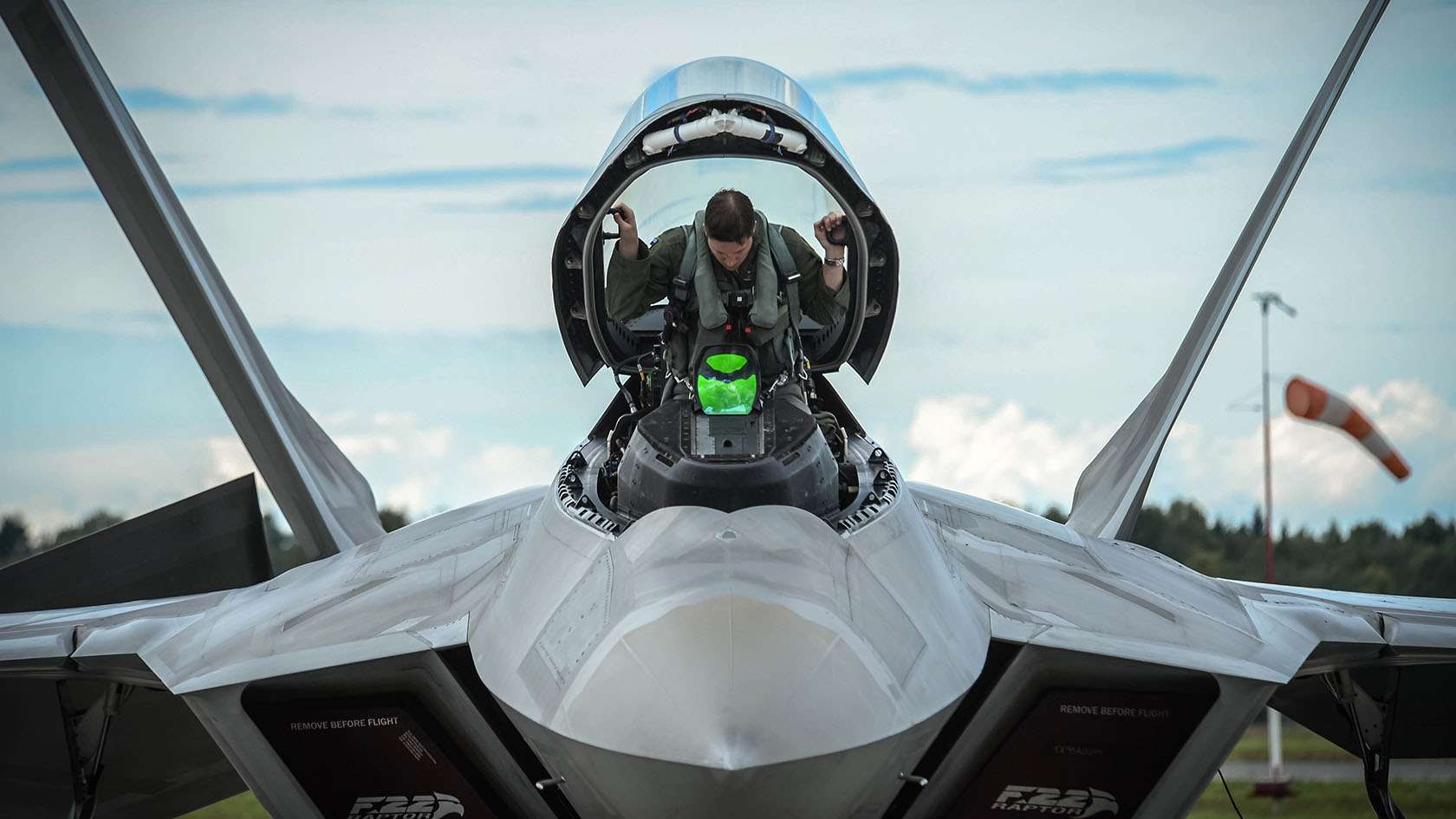Military Flight Schools - There are several problems with this article. Please help us improve it or discuss these issues on our talk page. (Learn how and why to remove this template message)
This document requires additional citations for verification. Help improve this article by adding citations to reliable sources. Contradictions of unsourced material can be eliminated. Find source: "United States Army Aviation Cter of Excellce" - News · Newspapers · Books · Academics · JSTOR (March 2010) (Learn how and why to remove this template message)
Military Flight Schools

This article contains content written as an advertisement. Please help us improve it by removing promotional content and inappropriate external links and adding encyclopedic text from a neutral perspective. (August 2010) (Learn how and why to remove this template message)
Air Force Pilots Conduct Flight Training For “aviadarts 2018”
The Army Aviation Center of Excellence, formerly known as the Army Aviation Center and School, is the United States Army Aviation Division's headquarters and training and development center located at Fort Rucker, Alabama. The Aviation Ctr of Excellence coordinates and deploys air operations, instructing aviation officers in a variety of subjects, including classroom navigation training, piloting aircraft, and basic combat operations. The current commanding general is Maj. Gen. Michael C. McCurry II.
The Office of Excellence includes three Air Brigades, 1st Air Brigade, 110th Air Brigade, 128th Air Brigade, various Army organizations and the NCO Academy.
Although most of the pilot and machine training for Army aviators in World War II took place at the Aviation Training Unit at the Field Artillery School in Oklahoma, the Army Air Forces provided basic training for Army aviation personnel. In the year At the outbreak of the Korean War in early 1953, the Postfield Aviation Training Center expanded and became the Army Aviation Academy. The post field was overcrowded due to the expansion of aviation and artillery training, so the Army decided to relocate the Army Aviation School. When a satisfactory permanent army base could not be found, Camp Rucker was selected as a temporary base. The Army Aviation School moved to Alabama in August 1954 and the first classes began at Rucker in October.
In the year On February 1, 1955, the Army Air Center was officially established at Rucker. In October of the same year, the post became permanent and its name changed from Camp Rucker to Fort Rucker. Prior to the mid-1950s, the Air Force provided basic training for Army aviation pilots and mechanics. In the year In 1956, the Pentagon gave control to the preparation of the army. Gary and Walters Air Force Base in Texas is where the Air Force conducted this exercise. He also transferred to the Army and, with inadequate facilities at Fort Rucker, continued basic fixed-wing training at Army Aviation Camp Gary until 1959 and basic rotary-wing training at Fort Walters until 1973.
Military Flight Aptitude Tests (ebook), Terry L. Duran
In 1956, the Army Air Center began collecting and testing weapons on helicopters. This test was theoretically conducted while the Air Force was still providing air fire support. This led to the development of a weapon system for the army's helicopters.
In the year In 2005, the Base Relocation and Closure Commission recommended that Fort Eustis' air logistics facilities be consolidated with the Fort Rucker Aviation Center and Schools. Despite this, the Army Air Combat Center was finally awarded the Army Air Combat Center of Excellence on June 26, 2006.
The UAS Unmanned Aerial Systems Center of Excellence (UAS COE), the U.S. Army's UAS Proponent Management Principle, provides integrated and centralized overall capability management and unmanned aerial systems integration.

The UAS COE "integrates and coordinates with all Army organizations, joint services, and other Department of Defense agencies to achieve the U.S. Army's UAS strategy, which includes interoperability with all manned and unmanned systems for current, emerging, and future UAS."
Where Huey Pilots Trained And Heroes Were Made
The 110th Aviation Brigade consists of three battalions. The 1st Battalion, 11th Aviation Regiment operates and manages air traffic control services for USAACE/Fort Rucker and the National Airspace System. The 1st Battalion, 14th Aviation Regiment all operate out of Hanchei Army Heliport and conduct graduate training using AH-64 Apache attack helicopters. The 1st Battalion, 212th Aviation Regiment operates from Low Army Heliport and Fotan Army Heliport and conducts combat and night operations training using OH-58 Kiowa, UH-1 Iroquois and UH-60 Blackhawk helicopters. The 1st Battalion, 223rd Aviation Regiment conducts flight training from Cairns Army Air Field and Knox Army Heliport using CH-47 Chinook helicopters and C-12 Huron aircraft.
At Cter, studs learn to fly in climates to support U.S. forces with the 110th Aviation Brigade. They typically spend 15 to 18 months in aviation school, learning various subjects and eventually graduating with "wings" or aviator badges. After graduating from a commission source (USMA, ROTC, or OCS), a lieutenant stays home and attends the two-month Basic Officer Leadership Course (BOLC) at Fort Rucker upon arrival at Fort Rucker. Upon completion, they join the rest of their unit, which usually consists of experienced junior warrant officers already enlisted.
Before starting their training, Stutts must complete dunker training and the Army's SERE (Survival, Evasion, Endurance, and Evasion) school. After SERE, students move on to Advanced Experimental Rotary Wing Aeromedical Training (also known as "Aeromed") at the United States Army Aeromedical School. You will learn topics about flight and the human body. The information provided in this class is frequently tested by Instructor Pilots (IPs) throughout the flight school. Flight training varies by stud and aircraft type, but generally in the UH-72A Lakota you complete basic flight training, explosive flight training, and basic combat skills training. Thin air maneuvering of high-risk technology aircraft over mountainous terrain in all US service branches. A HAATS Black Hawk helicopter approaches Pyramid Peak (left) and Maroon Bells outside Aspen on Aug. 13, 2019.
A nondescript brick building north of Eagle County Regional Airport houses a special military academy called the High Altitude Army National Guard Aviation Training Center, known to many helicopter pilots as HATS.
Army Aviation Brigade Organizes Flight Training
HATS commander Lt. Col. Charles "Brit" Reed put it simply. His teachers and staff "make the unusual seem like a normal thing."
The exception is helicopters that fly at high altitudes or in all low pressure areas. They call it 3H (High, Hot, Heavy). However, the technical term used by teachers is energy management.
As the helicopter climbs, the air cools down and as the engine heats up, lift decreases. So the power to move helicopters is less. Learning how to measure power is more art than science, said Chief Warrant Officer Ethan Jacobs.

Virginia National Guard personnel practice HAATS landings in the White River National Forest between Gypsum and Aspen.
Master The Military Flight Aptitude Tests: Peterson's: 9780768941135: Books
“It's like seeing a street in the city. One person may take a certain path and another may take another path for different reasons," he explains. Our job is not to give people answers, but to guide people to make decisions.
C.M.D. Port Angeles, Washington-based Coast Guard pilot Sam Hill is one of approximately 375 aviators expected to pass HAATS this year. Students from all over the country gather here in Gypsum, Colorado and foreign military allies from Tunisia, Denmark, Norway, Saudi Arabia and more.
The plane performs well at sea level, Hill says, but becomes more difficult as you climb. So we try to estimate all the different reasons that can happen, wind, temperature or low barometric altitude. And if they are not ahead. "It can bite you ... you can put yourself in a very dangerous situation."
HAATS started in 1985 with pilots helping pilots. Vietnam-era aviators felt the need to train young pilots in high, hot, harsh conditions. The school was formalized in 1995. Since then, weekly classes are held 30-45 times a year.
Military Aviation Crashes Are Again On The Rise. Are Ongoing Safety And Training Issues To Blame?
Every morning and afternoon, pilots and instructors fly their airplanes to approach difficult landing spots and make a pass or two to find the approach that works best for the pilot and the airplane.
Hart Van Denberg/News Staff Sgt. Heather Hunt of the Virginia National Guard at the White River National Forest Landing between Gypsum and Aspen in 2015. August 13, 2019.
Lt. Col. Hart Van Denberg/NewsHAATS Commander Lt. Col. Britt Reed boards a Black Hawk helicopter for a flight to Aspen on Aug. 13, 2019.

Hart Van Denberg/News The Army National Guard's High Altitude Aviation Training Center in Eagle County trains helicopters from all U.S. service areas in the high-risk handling of aircraft in thin air over mountainous terrain. August 13, 2019
Ways To Become An Army Pilot
Hart Van Denberg/News Staff Sgt. Virginia National Guard's Patricia Beach takes notes during a HAATS flight on August 13, 2019, in the White River National Forest.
Hart Van Denberg/Chief News Officer Lang Jacobs, Virginia National Guard
Post A Comment:
0 comments so far,add yours